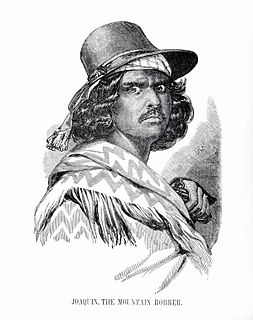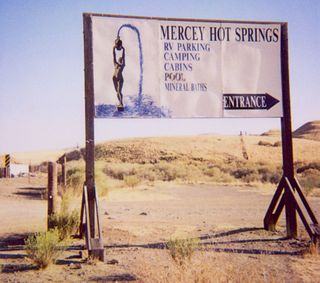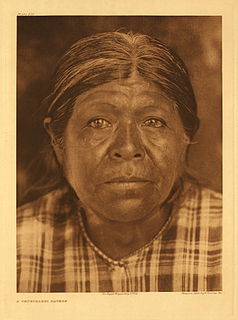Early life
Thomas Jefferson Mayfield was born in 1843, in Brazos County, Texas, the youngest of the three sons of William Mayfield and his first wife, Terissa Faller, of Hardeman County, Tennessee. [1] [2] By 1848, his mother had died and his father was remarried, to Maria or Mary Ann Curd. When he was six, his family came to California by voyage round Cape Horn because violence between Texas settlers and Apaches made the San Antonio-El Paso Road land route too dangerous. From San Francisco, they made their way by horse and mule pack south through San Jose and over the Pacheco Pass into the Central Valley. [3] Maria Curd Mayfield died shortly after December 1850. William Mayfield went to herd cattle with Jeff’s two older brothers and left young Jeff, as he was known, with local Choinumni, Kings River Yokuts Indians who had befriended the family. For the following decade, Jeff, lived in a village across from his families home at the mouth of Sycamore Creek, on Kings River (now under Pine Flat Lake). [4] He had almost no contact with whites and fully assimilated to their native language and culture. [3] Around the age of eighteen, Mayfield rejoined his family and after 1862 surrendered any sustained ties to the Choinumni.

Brazos County is a county located in the U.S. state of Texas. As of the 2010 census, its population was 194,851. The county seat is Bryan. Along with Brazoria County, the county is named for the Brazos River, which forms its western border. The county was formed in 1841 and organized in 1843.
William Mayfeild (1810–1862) was an American pioneer in Illinois, Texas, and California; a soldier, farmer, miner, and a cattleman. He led Tulare County militia to aid settlers in the early part of the Owens Valley Indian War and was killed in the Battle of Mayfield Canyon.

Hardeman County is a county located in the U.S. state of Tennessee. As of the 2010 census, the population was 27,253. Its county seat is Bolivar.
Later life
For the remainder of his long adulthood, Mayfield lived as a sheepherder and prospector. [5] In old age, he settled in the mining town of Tailholt, later White River, today a California ghost town in Tulare County. [6]

Prospecting is the first stage of the geological analysis of a territory. It is the physical search for minerals, fossils, precious metals or mineral specimens, and is also known as fossicking.
White River is a little unincorporated community in Tulare County, ten miles east of Delano, California, United States. It was founded as a gold camp in 1856, during the Kern River Gold Rush. It was first located on the Coarse Gold Gulch two miles west of the present site and was called Dogtown.
Mayfield was known throughout the region as Uncle Jeff, a pioneer with a store of lore and thus brought to the attention of the visiting oral historian and ethnographer Frank F. Latta (1892–1981). Shortly before Mayfield’s death, Latta persuaded him to dictate his recollections, which Latta published as a series of newspaper articles, and then, after Mayfield’s death in 1928, as San Joaquin Primeval: Uncle Jeff’s Story, a rather hastily put-together and somewhat shoddy edition that he tried for many years to improve upon. [5] Although Latta gradually added additional details on Mayfield, as well as related material from his extensive regional research, it was not until 1976 that he was able to release Tailholt Tales as the “complete Mayfield” text. However, current editions rely upon the 1928 book as closer to Thomas Jefferson Mayfield’s own understanding of his life as someone once fully native and thereafter part of a culture hostile to traditional ways of life. [5] His oral memoir records a world that was already rapidly vanishing when he encountered it, for by his estimate the Choinumni numbered three hundred in 1850 but no more than forty after 1862. [7]

Joaquin Murrieta Carrillo, also called The Robin Hood of the West or the Robin Hood of El Dorado, was a Sonoran forty-niner, a vaquero and a gold miner that became a famous outlaw in California during the California Gold Rush of the 1850s. The popular legend of Joaquin Murrieta is that of a peace-loving man driven to seek revenge when he and his brother were falsely accused of stealing a mule. His brother was hanged and Joaquin horsewhipped. His young wife was gang raped and in one version she died in Joaquin's arms. Swearing revenge, Joaquin hunted down all who had violated his sweetheart. He embarked on a short but violent career that brought death to his Anglo tormentors. The state of California then offered a reward of up to $5,000 for Joaquin "dead or alive." He was reportedly killed in 1853, but the news of his death were disputed and myths later formed about him and his possible survival.
Estanislao was an indigenous alcalde of Mission San José and a member and leader of the Lakisamni tribe of the Yokut people of northern California. He was notorious for leading bands of armed Native Americans in revolt against the Mexican government and Mission establishments.
The community of San Antonio Valley, also called San Antonio or San Antone, is located along the Diablo Range in eastern Santa Clara County, California. The locale is bordered by Alameda County to the north and Stanislaus County to the east. The sparsely populated area is located at the junction of San Antonio Valley Road, Mines Road, and Del Puerto Canyon Road. The area includes the San Antonio Valley Ecological Reserve, a 3,282 acre nature preserve created by a Nature Conservancy purchase of land from local rancher, Keith Hurner, and known for its herd of tule elk.

The Plains and Sierra Miwok were once the largest group of Native American Miwok people, indigenous to California. Their homeland included regions of the Sacramento Valley, San Joaquin Valley, and the Sierra Nevada.

Mercey Hot Springs is an unincorporated community in the Little Panoche Valley of Fresno County, central California, about 60 miles (97 km) west-southwest of Fresno. It is a resort along South Fork Little Panoche Creek and the Little Panoche Road located at the western edge of Fresno County.
Yokuts traditional narratives include myths, legends, tales, and oral histories preserved by the Yokuts people of the San Joaquin Valley and southern Sierra Nevada foothills of central California.
Santa Rosa Rancheria is the reservation of the Santa Rosa Indian Community of the Santa Rosa Rancheria. It is located 4.5 miles (7.24 km) southeast of Lemoore, California. Established in 1934 on about 40 acres, the Santa Rosa Rancheria belongs to the federally recognized Tachi Yokuts tribe. It is the site of the Tachi Palace Hotel & Casino. The population was 517 at the time of the 2000 United States Census and had increased to 652 by the 2010 United States Census. In 2010, 288 residents were under 18 and 29 (4.4%) were 65 and over.
Tammukan is an alternate spelling of Tamcan, the name of a local tribe of Delta Yokuts-speaking natives in the U.S. that once lived on the lower reaches of California's San Joaquin River in what is now eastern Contra Costa County and western San Joaquin County, California. The Tamcans were absorbed into the system of the Spanish missions in California in the early nineteenth century; they moved to Mission San José, near the shore of San Francisco Bay, between 1806 and 1811. At the mission, they and their descendants intermarried with speakers of the San Francisco Bay Ohlone, Plains Miwok, and Patwin Indian languages. Mission Indian survivors of these mixed groups gathered at Alisal, near Pleasanton in Contra Costa County, in the late nineteenth century.
Visalia, California, commonly known in the 1850s as Four Creeks, is the oldest continuously inhabited inland European settlement between Stockton and Los Angeles. The city played an important role in the American colonization of the San Joaquin Valley as the county seat of Old Tulare County, an expansive region comprising most if not all of modern-day Fresno, Kings, and Kern counties.
New Appalachia is the concept that the quality of life in the San Joaquin Valley of California is comparable or worse than the traditionally impoverished Appalachia region of the Appalachian Mountains and therefore shares similar hardships.
Aguaje de Las Berendas, or Antelope Springs, is a spring in located on the west side of the San Joaquin Valley, at the foot of the foothills of the Diablo Range, in Merced County, California.
Mesteñeros, or mustang runners, were people in Western North America in the 19th and early 20th century, usually vaqueros or cowboys, that caught, broke and drove wild horses, called mesteños or mustangs, to market in the Spanish and later Mexican, and still later American territories of what is now Northern Mexico, Texas, New Mexico and California. These Mesteñeros operated primarily in the Great Plains from Texas and New Mexico from the 18th century and in California, primarily in the San Joaquin Valley during the 19th century and in the Great Basin during the 20th century.
The Mason Henry Gang were bandits operating in Central and Southern California in 1864-1865. As the Civil War was in progress, they were able to pose as Confederate Partisan Rangers, and their original mission was to rid the area of (anti-slavery) Republicans. But when it became clear that the Confederate cause was lost, they turned to outlawry, plundering and killing without mercy.
Frank Forrest Latta (1892–1983), California oral historian and ethnographer of the Yokut people and historian of the early settlement of the San Joaquin Valley.
Benjamin Mayfield (1831–187?) cowboy, miner, killed the outlaw John Mason.

Sycamore Creek is a stream, tributary to the Kings River, in Fresno County, California.








